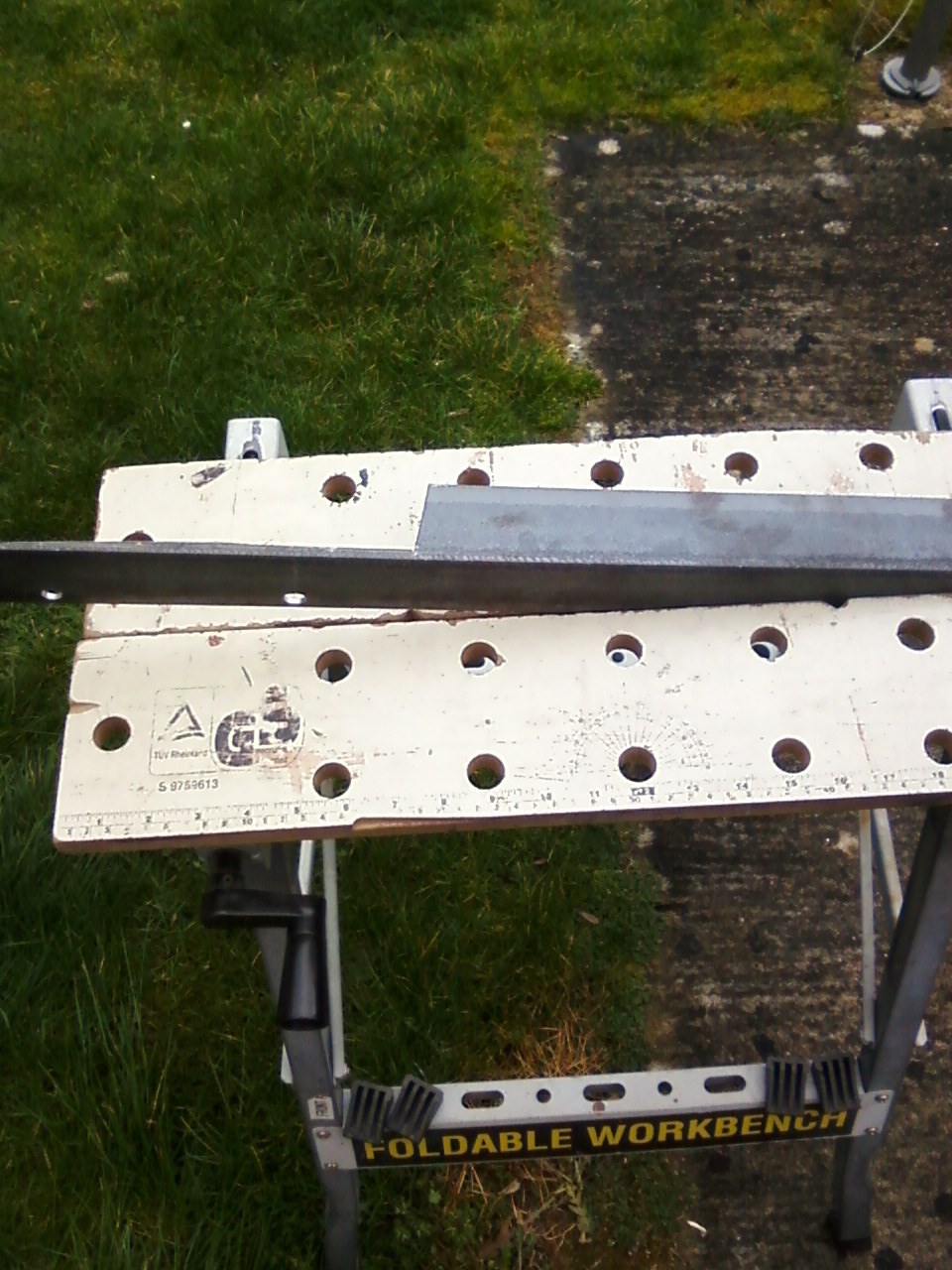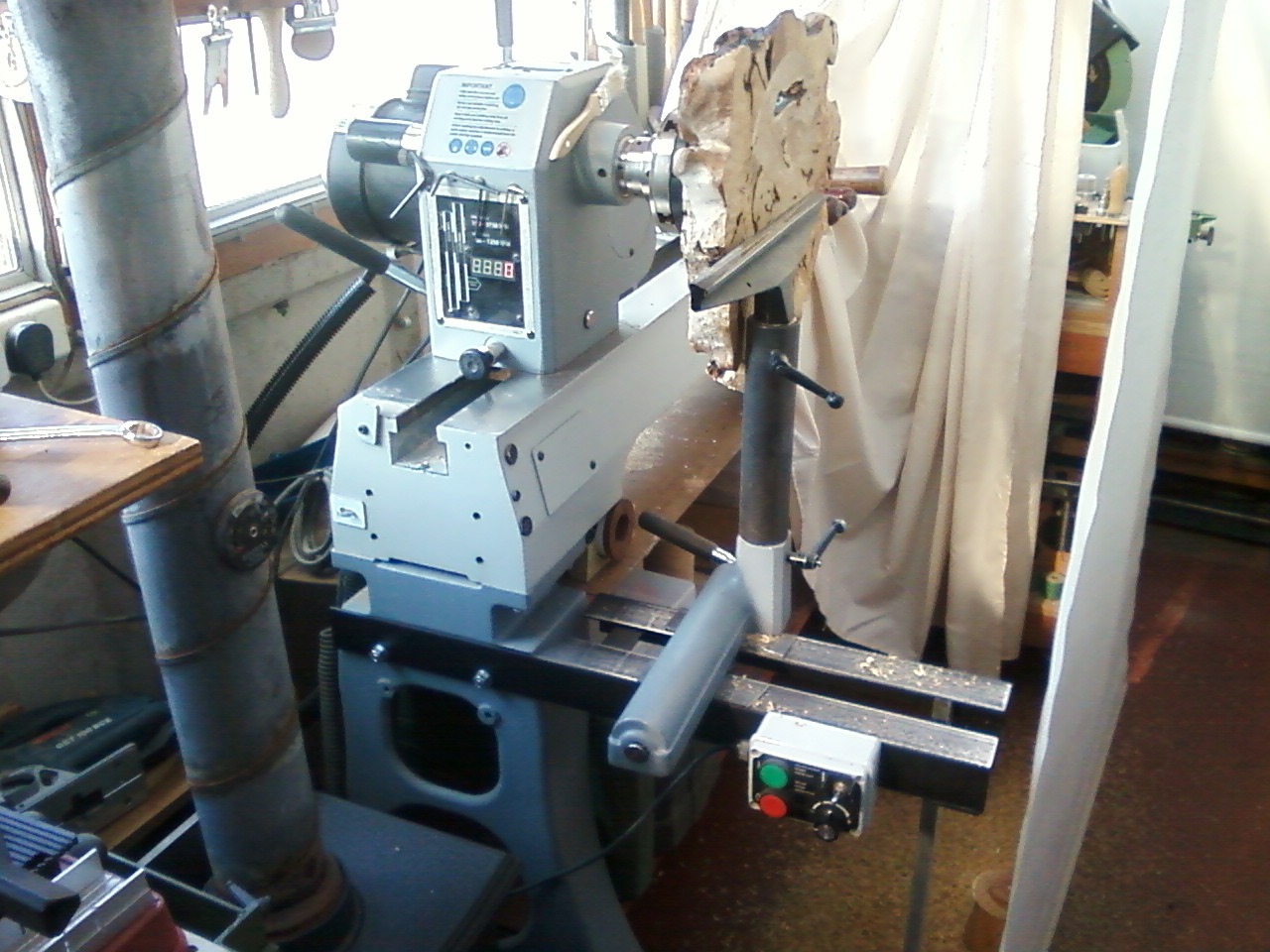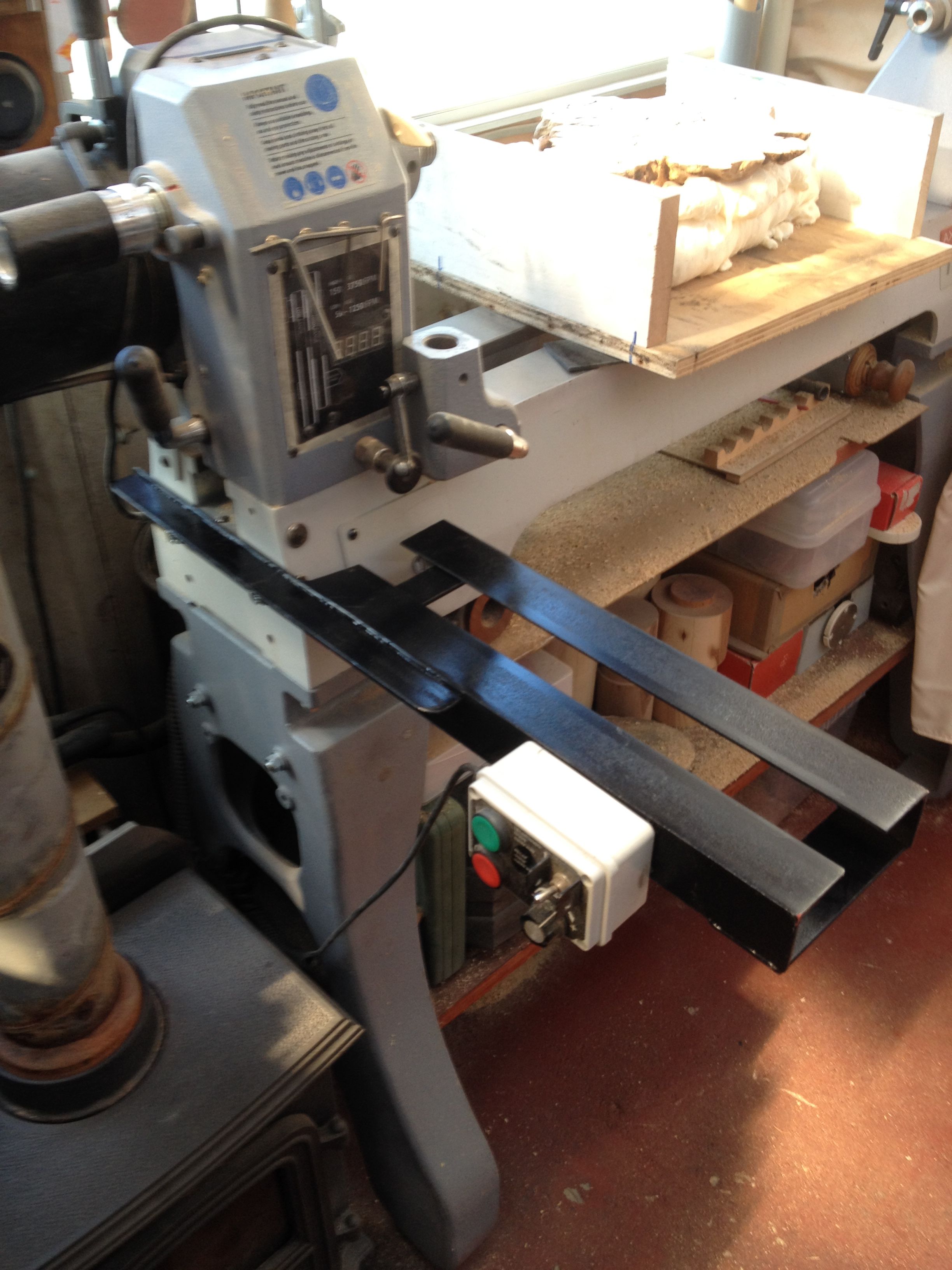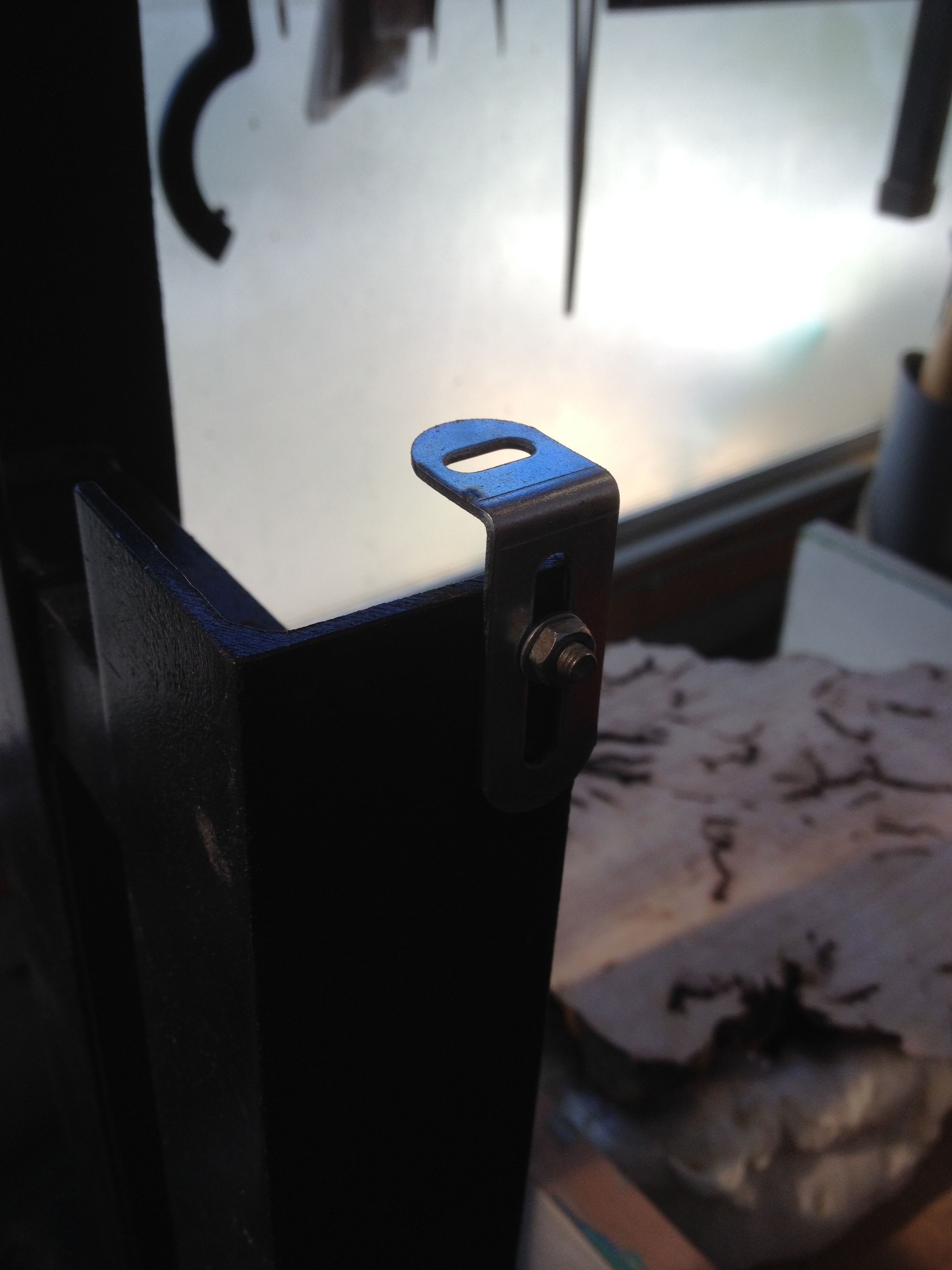Robbo3
Established Member
Outrigger for AT1628VS lathe
Although you can buy an extension for the AT1628VS,it attaches in line with the bed. To be able to use it, I have to move both the lathe & a load of other equipment that's in the way.
The Stratos & Record lathes have an outrigger that is at right angles to the bed. This would be a much easier solution for me so I went about devising one.
Two things I wanted were, for it not to be a permanent fixture, thus removable & not to have to drill any holes in the lathe or legs.
The position for the extension on both the lathe bed & on the legs are threaded 3/8" UNC, with the supplied bolts being 2" long. These would protrude too far allowing the possibility (near certainty in my case) of catching myself on them.
So I bought 10 shorter ones off Ebay along with matching nuts.
I then went to a local steel stockist where I bought 2m of 50x50x3mm angle iron for £10. They cut 700mm off the length for me which was the maximm length I needed.
First cut a long notch to clear the leg. I levelled the iron & clamped it in place to mark the position of the bolt holes from the inside of the leg


A second piece of angle iron was cut for the inside. A small piece of angle iron & a flat piece were cut to act as spacers inboard & out board respectively. I'm using whatever bits I have to hand.
Luckily there is an excellent welding workshop just round the corner & he charged me £10 to weld the pieces together. Well worth it as I didn't have to find all the bits for my stick welder & twice in the past I got arc-eye.
Trial run.

Finished item, tarted up with a bit of black paint & a removable support leg.
If I were starting again I would probably use thicker angle iron because there is a little sideways wobble from the flex at the corner of the notch. I may add a strengthening plate if it becomes a problem.

Although you can buy an extension for the AT1628VS,it attaches in line with the bed. To be able to use it, I have to move both the lathe & a load of other equipment that's in the way.
The Stratos & Record lathes have an outrigger that is at right angles to the bed. This would be a much easier solution for me so I went about devising one.
Two things I wanted were, for it not to be a permanent fixture, thus removable & not to have to drill any holes in the lathe or legs.
The position for the extension on both the lathe bed & on the legs are threaded 3/8" UNC, with the supplied bolts being 2" long. These would protrude too far allowing the possibility (near certainty in my case) of catching myself on them.
So I bought 10 shorter ones off Ebay along with matching nuts.
I then went to a local steel stockist where I bought 2m of 50x50x3mm angle iron for £10. They cut 700mm off the length for me which was the maximm length I needed.
First cut a long notch to clear the leg. I levelled the iron & clamped it in place to mark the position of the bolt holes from the inside of the leg


A second piece of angle iron was cut for the inside. A small piece of angle iron & a flat piece were cut to act as spacers inboard & out board respectively. I'm using whatever bits I have to hand.
Luckily there is an excellent welding workshop just round the corner & he charged me £10 to weld the pieces together. Well worth it as I didn't have to find all the bits for my stick welder & twice in the past I got arc-eye.
Trial run.

Finished item, tarted up with a bit of black paint & a removable support leg.
If I were starting again I would probably use thicker angle iron because there is a little sideways wobble from the flex at the corner of the notch. I may add a strengthening plate if it becomes a problem.











































